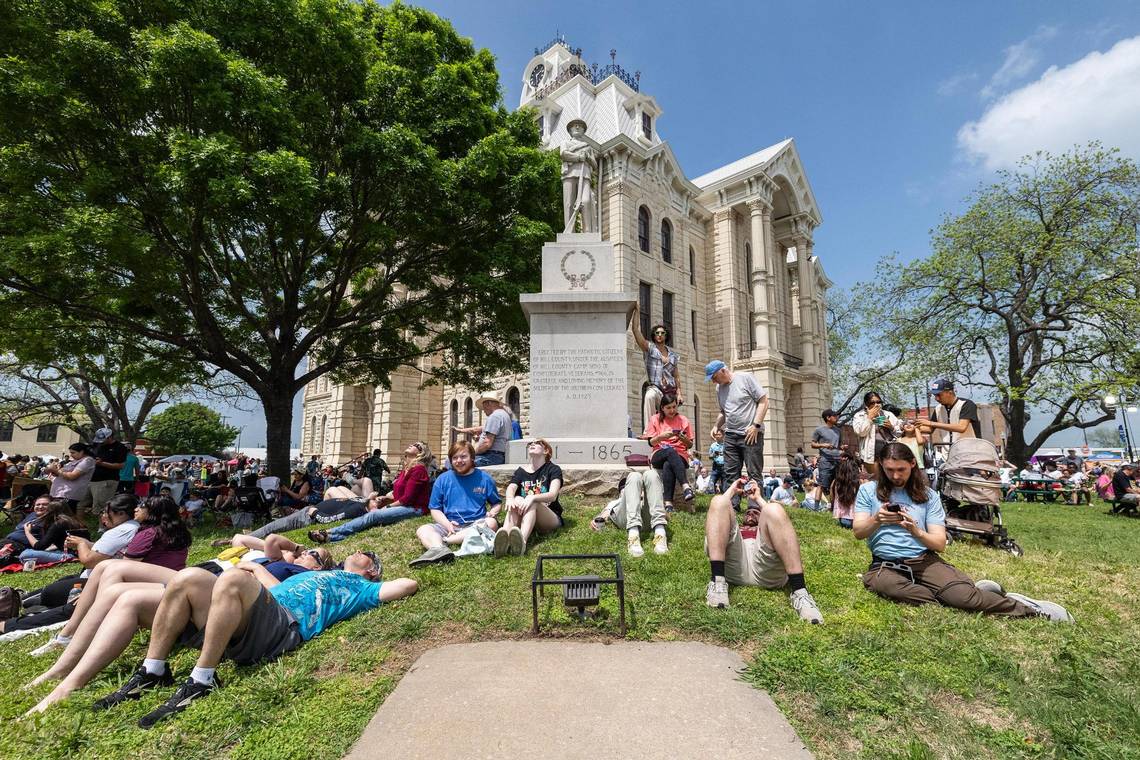The predictions were astronomical. The eclipse watchers at The Great American Eclipse foresaw as many as 1 million people coming to Texas for the big show. The Perryman Group, a Waco-based economic analysis firm, prophesied around $1.4 billion injected into the Texas economy as a result.
But the real numbers of how many people came to Texas to watch the eclipse appear to be toward the lower end of expectations. (The Great American Eclipse’s prediction was 270,000 to 1.08 million visitors.)
Kaufman County, southeast of Dallas, was expecting as many as 200,000 visitors on Monday. It was one of 16 Texas counties and cities that issued disaster declarations ahead of the eclipse.
But the county estimates that it saw only around 50,000 out-of-towners, according to Ashely Kirby, a coordinator in County Judge Jakie Allen’s office. The weather was possibly to blame, she said.
While guests from around the world nearly doubled Hillsboro’s population of around 8,500, eclipse watchers predicted as many as 60,000 visitors to descend upon the city at the fork of the Interstate 35 split about 50 minutes south of Fort Worth.
Turnout was less than stellar elsewhere in the parts of Texas in the path of totality, according to media reports. Crowds were much smaller than expected in Fredericksburg and other Hill Country towns, Austin’s KXAN-TV reported.
Travis County also issued a disaster declaration, as did the city of Killeen. Representatives from those administrations did not respond to questions about turnout, nor did the Texas Division of Emergency Management, which coordinates emergency responses across the state.
The Texas Department of Transportation issued an eclipse travel guide in late March, and signs on major highways warned of heavy traffic before, during and after the eclipse. However, social media reports showed very light traffic on Texas highways in the hours after the event.
TxDOT spokesperson Adam Hammons told the Star-Telegram in an email exchange that while some areas did see some congestion after the eclipse, “traffic flowed smoothly in a large part of the state with less-than-normal rush-hour traffic levels in many areas.”
He attributed this to the department’s monthslong planning for the event and to Texas drivers.
“Over the past few months we asked drivers to expect and plan for extra traffic and find a safe parking spot instead of parking on the side of the road, and Texans seemed to hear those messages,” he wrote. “We want to thank Texas drivers and all our state partners for helping make this eclipse a once-in-a-lifetime experience.”
A Star-Telegram reporter who drove from Waco to Fort Worth on Monday evening noted that traffic on the often congested highway was lighter than usual.
Ray Perryman, of the Perryman Group, told the Star-Telegram that it would take a while to see how accurate his firm’s economic projections were.
“In a few months, when we have retail sales, sales tax, occupancy tax, and other data, we hope to be able to look at the ultimate effects and get an idea of how well they conformed with expectations,” he said in an email exchange.
